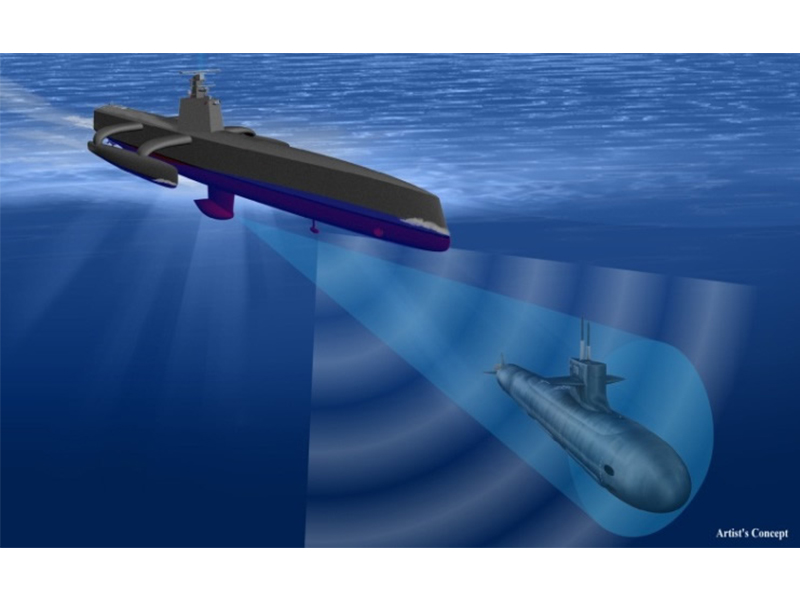
NREC contributes to DARPA Autonomous Anti-Submarine Vessel
An important milestone in the Defense Advanced Research Projects Agency (DARPA) Anti-Submarine Warfare Continuous Trail Unmanned Vessel (ACTUV) program was recently reached with the announcement that the prototype autonomous ship developed by Leidos, the Sea Hunter, will be launched in April 2016 and subjected to long range testing over the following 18 months. The Sea Hunter is designed to autonomously cruise the seas with minimal supervision from a remote operator while hunting and tracking submarines over long distances and extended periods of time. NREC was a key partner to Leidos during this program, developing the ACTUV’s path planner.
The integrated NREC path-planning engine utilizes mission objectives, nautical charts, and sensor data to find the best course to safely reach the vessel’s destination. This autonomy system can handle long transits between distantly-spaced, sparse waypoints and supports loitering in an area, maintaining the vessel’s position within a spatially-defined box. This planning engine must also ensure that all of the courses computed by the autonomy system comply with the International Regulations for Preventing Collisions at Sea (COLREGS) rules that govern how vessels interact and avoid collisions at sea. Additionally, the autonomy system obeys a set of operational rules that can change based on the vessel’s current situation, its mission, and the discretion of the local captain.
NREC is proud of the contribution that our path planning system has provided to this important program and look forward to future collaborations in the field of autonomous marine navigation.